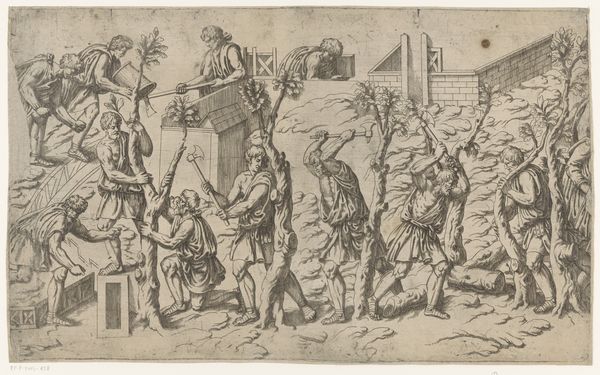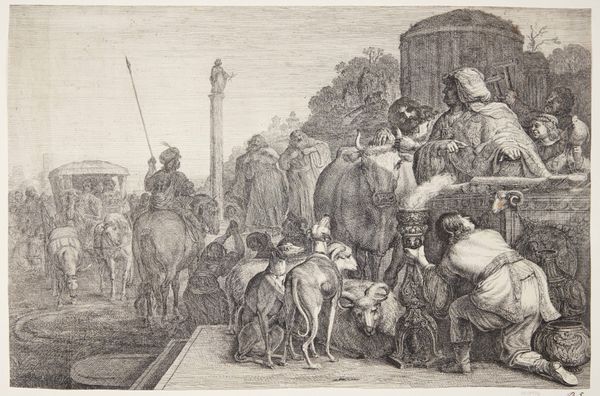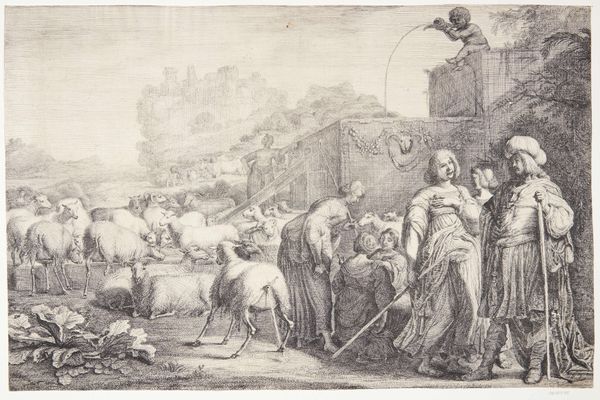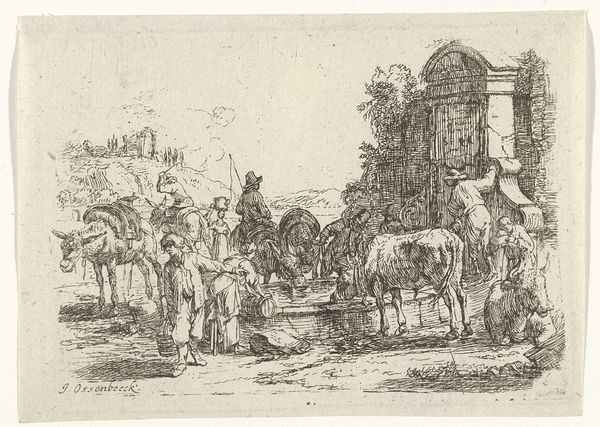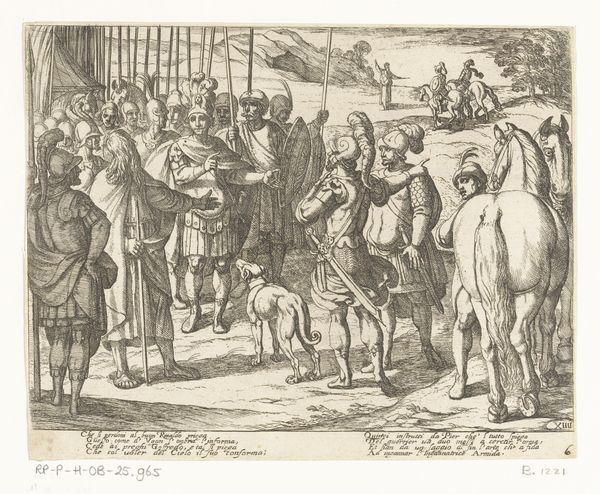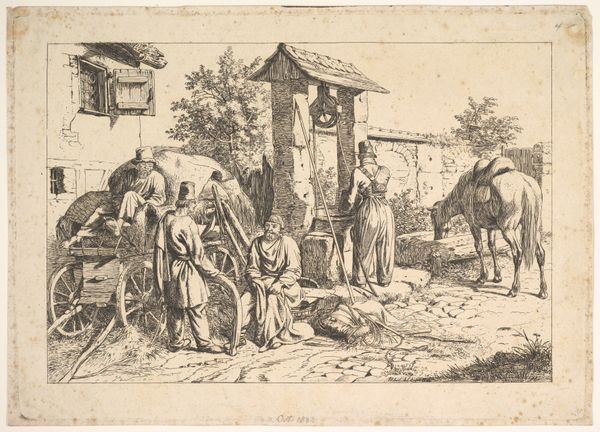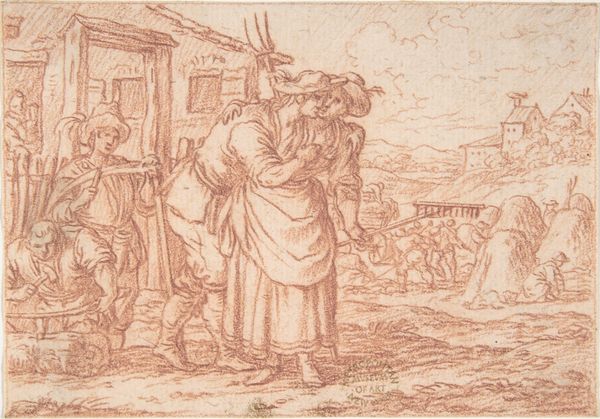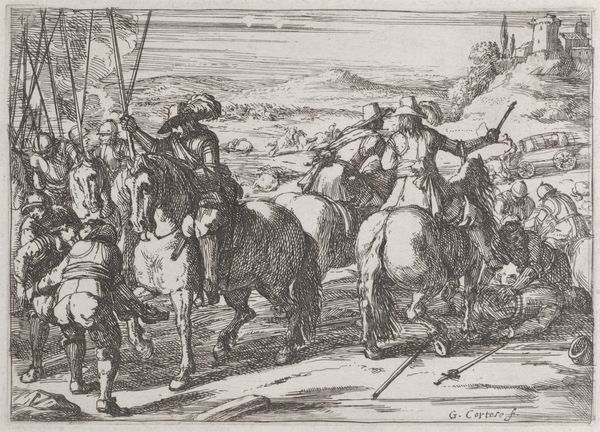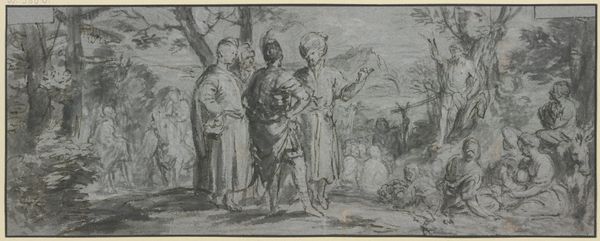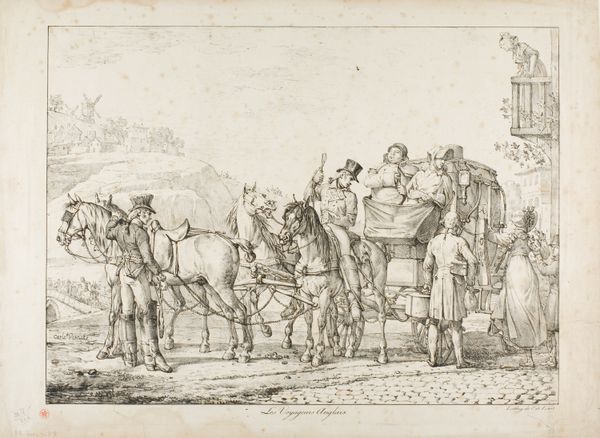
Moses and Zipporah Returning to Egypt, from Old and New Testaments 1549
0:00
0:00
drawing, print
#
drawing
#
medieval
#
narrative-art
# print
#
landscape
#
figuration
#
child
#
geometric
#
horse
#
men
#
line
#
pen work
#
history-painting
#
northern-renaissance
Dimensions: Sheet: 4 1/2 × 5 11/16 in. (11.4 × 14.5 cm)
Copyright: Public Domain
Curator: This intricate drawing is titled "Moses and Zipporah Returning to Egypt," created in 1549 by Augustin Hirschvogel. Editor: It feels… restrained, almost brittle. The linear precision is quite striking, though the composition appears a bit awkward, particularly with the donkey. Curator: Hirschvogel was a master of the line, known for his contributions to both cartography and glass painting. The meticulous details he incorporates demonstrate his concern for accurate representation of landscapes. This artwork reflects his training in printmaking. Note how he is playing with the weight and spacing of the lines. Editor: I’m curious about the representation of Zipporah here, alongside Moses. How often do we see her centered in depictions of this particular return to Egypt? I'm struck by how she's not just a passive figure, but seems integral to the narrative. Are the children a detail extracted straight from a biblical description? Curator: She's a crucial element; she insisted on circumcising her son, averting divine wrath aimed at Moses for failing to do so. Those are their sons on the donkey, Gershom and Eliezer, though the account of Zipporah using the flint to circumcise Gershom at an inn seems pointedly omitted from this telling. Her labor and intervention literally saves Moses. We have a powerful reclamation of the symbolic use of craft and the circumcisional knife. Editor: Absolutely! I hadn't considered how deeply this domestic act resists straightforward religious authority. And I am thinking of this print as a crafted object—the production and circulation of prints in the Renaissance allowed for wider access to biblical stories, reshaping how individuals encountered scripture beyond the established religious institutions. What do you think accounts for that basket strapped on to the poor donkey, by the way? Curator: Well, if we consider the use of animal labor to free humans for mental tasks and innovation in areas like architecture or literature…Perhaps we should be interrogating whether the presence of such figures as Moses or even the printing of the bible for more homes reflects similar ideas. The children ride within a rectangular carrier that mimics geometric architecture off in the distant rendering, highlighting the artifice present. Editor: Right, the juxtaposition of the domestic with those soaring cathedrals of European design underscores complex relations, between power and subjugation in the everyday as they existed during the period this was produced. The artist had an ambivalent take on the world, if you will. Curator: I see this work now as a dense combination of technical craft and material necessity, which reveals a fascinating glimpse into labor dynamics in that place and time. Editor: And, conversely, the artwork offers up key areas of inquiry into biblical interpretations, shifting cultural forces, and artistic autonomy. Thank you.
Comments
No comments
Be the first to comment and join the conversation on the ultimate creative platform.
